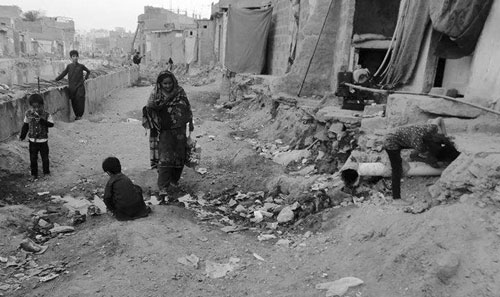Ghettoisation of Karachi
MIGRATION is a global mega trend of our time — significantly impacting socio-spatial development and infrastructure capacity.
In 2021, despite COVID 19 mobility limits, global migration, i.e., country to country migration, was recorded at 281 million, up from 272 million recorded in 2019, while internal migration within the country was 740 million people around the world.
Pakistan is currently undergoing both internal and external migration. Pakistan is one of the five largest recipients of refugee populations worldwide.
In addition, Pakistan is also witnessing a continuing trend of internal migration from rural to urban areas, taking the urban population in the country to 75.6%. The pressure on social and physical infrastructure in cities is now reaching a breaking point.
Karachi, the 7th largest city in the world with an official population of over 16 million people, and an unofficial population of more than 20 million people, is growing at a rate of approximately 5% each year. Aptly called a concrete jungle, Karachi seems to be moving at a rapid pace in both vertical and horizontal densification.
A recent report by the Karachi Metropolitan Corporation shows alarmingly high statistics of human density, measured at 24,000 people per square kilometre.
This rapid growth and densification are in large part due to in-urban migration, with around 45,000 migrant workers coming into the city every month from all over the country.
The physiology of the city has changed considerably in just a few decades. Natural streams, rivers, creeks, and amenity plots dedicated for parks or open public spaces have been constructed upon, by informal development, real estate developers and the city authorities.
All this growth has demonstrated to be quite unsustainable, for it results in lack of public space and diminishing natural environments.
The internal migrants to Karachi constitute a vital part of the city. Municipalities must take measures and formulate policies that integrate the newly arrived and diverse migrant populations settling in Karachi.
Myriad motivations underlie internal migration to Karachi, including, but not limited to, escaping conflict in the migrants’ places of origin, general political unrest, and climate impacts on livelihoods such as farming and cattle-rearing to name a few.
From within these reasons, economically motivated migration is significantly higher, making up over 20%of total internal migration in the country.
This shows that the country’s income prospects are concentrated mostly in and around urban agglomerations.
This raises the following question: who is a migrant in Karachi? Are migrants the most marginalized section of the society? Karachi attracts and hosts a huge migrant population; yet the city struggles to provide a sustainable living and lacks the social infrastructure to offer to its citizens, particularly the migrants. This is almost tantamount to a crisis.
Most new migrants to the city reside in informal settlements. Such settlements are affordable, but only at the expense of a stable access to basic amenities (such as electricity, water, gas).
Though rents are cheap, the new migrants are at a loss for a healthy environment. It is in these informal settlements that the new migrants start building a home, accumulate social capital and integrate into existing networks.
These informal settlements eventually end up being known as communities, coteries, or cliques. Housing is one of the worst evils in this city.
A necessary step towards turning Karachi into an inclusive city is to think about integrated housing needs for those marginalized by the ridiculously high housing mark, especially the new migrants to the city. A very thin percentage of the city has the right to a home.
The questions that must be asked are the following: Will the current trend of doing selective development further polarize Karachi and other major cities of Pakistan into spatial and social segregation? Will the migrant population of this city ever have the right to education, freedom to participate in political processes, social and financial mobility, and the equity to share space? For now, the current trends seem to say otherwise.
—The writer is a Researcher currently associated with the UNDP Pakistan and IBA Karachi Urban Resilience Project.










